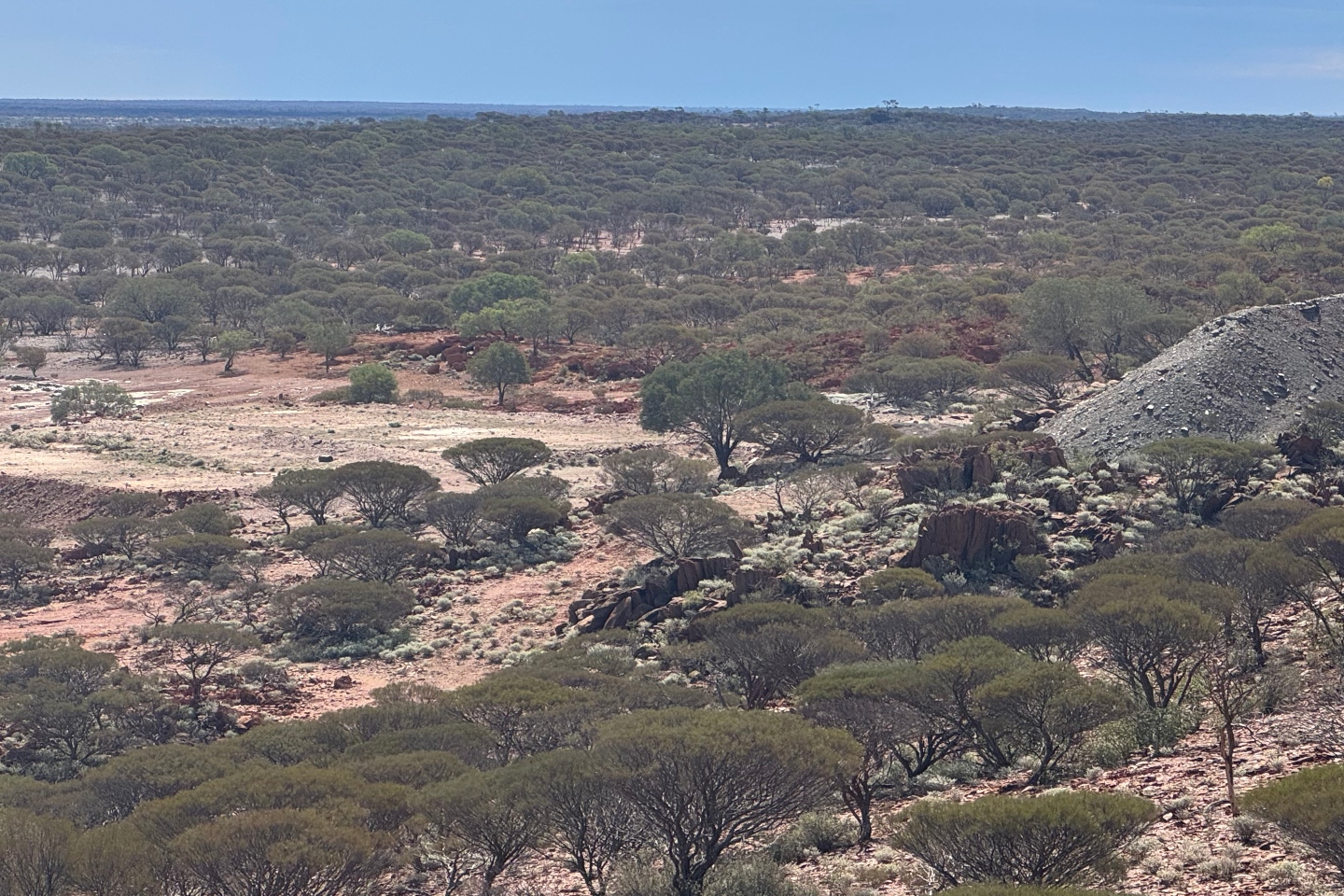Neometals has delivered a 250,000-tonne mineral resource estimate averaging 1.6g/t gold for mineralisation near historical underground workings at its Ironclad deposit in the company’s Barrambie project near Sandstone. The inaugural inferred estimate of 13,000 ounces gold for Ironclad was completed to confirm historical non-JORC compliant estimates and is based mainly on shallow reverse circulation and rotary air blast holes drilled mostly to less than 75 metres deep.


Neometals has delivered a 250,000-tonne mineral resource estimate averaging 1.6 grams per tonne (g/t) gold for mineralisation near historical underground workings at its Ironclad deposit, part of the company’s Barrambie project in Western Australia.
The inaugural inferred estimate of 13,000 ounces of gold for Ironclad was completed to confirm historical non-JORC compliant estimates and is based mainly on shallow reverse circulation and rotary air blast holes drilled mostly to less than 75 metres deep.
The timely validation also supports the company’s prioritisation of Ironclad, 80 kilometres northwest of Sandstone, for early mining development of its mostly shallow gold mineralisation.
The company is getting set to assess its recently completed oriented core, for which it is still awaiting analytical results, and will soon begin infill drilling and initial economic evaluation at Ironclad.
Core orientation is used to determine the original 3D spatial position of a core sample relative to the Earth's surface and is critical for a complete understanding of geological structure, especially in exploration, mining and construction projects.
Neometals’ wholly owned 505-square-kilometre Barrambie project covers about 40km of strike along the underexplored Barrambie greenstone belt.
The project’s considerable historical gold occurrences and potential have more recently been overshadowed by its titanium and vanadium deposits.
The potential for high-grade gold mineralisation at Barrambie is exemplified by several historical mining sites, which recorded an average 24.8g/t production grade.
From historical drill data, Neometals estimated a gold exploration target for the Barrambie project between 8 million tonnes at 1.3g/t gold and 10.5Mt at 2.3g/t gold, for 335,000 ounces and 775,000 ounces of gold, respectively.
While the company is reporting a mineral resource estimate for Ironclad in its latest announcement, it emphasises that it is not currently proposing any modifications to its conceptual gold exploration target for the overall Barrambie project.
Neometals believes its extensive Barrambie tenure, which has seen little modern exploration, holds strong potential for multiple gold deposits. The company sees the project as offering opportunities to advance and grow existing and new targets.
Ironclad is a more advanced target among the Barrambie prospects and was the subject of a 1988 Notice of Intent lodged by previous explorer Samson Exploration NL, which proposed multiple mines capable of feeding a central processing facility at Barrambie.
Geologically, the gold mineralisation occurs in two distinct styles and locations. These include a zone of stockwork veining, which was the focus of historical exploration within the saprolite zone.
This style appears to transition to relatively slab-like, steeply dipping, northwest-striking vein infillings in shears, at depth and along strike.
With the project’s greater regional-scale potential in mind, Neometals is also planning maiden drilling at its other priority targets along the greenstones within the Barrambie ground, including the historic Mystery, Barrambie Ranges and Kismet workings.
Neometals’ managing director Chris Reed said: “This first MRE supports our view of the near-term mining potential at Ironclad and we will be focussing efforts on extension and infill drilling, evaluation studies and approvals to enable a decision to mine next financial year under a quarry and ore-sale model.”
A total of 239 reverse circulation and rotary air blast drill holes were included in the mineral resource estimate. Of those, the company drilled nine inclined reverse circulation verification holes into the area in February.
The maiden resource estimate was undertaken to substantiate historical data predating the JORC code, based on shallow drilling near the old underground workings.
The company says extensions to mineralisation outside the mineral resource estimate area have not yet been drilled sufficiently to support a resource estimate, and that its inferred classification reflects the company’s strong reliance on historical data.
Neometals says its mineral resource estimate for Ironclad only begins to scratch the surface of one of many old mines and prospects along the greenstones within its Barrambie gold project.
With Barrambie having seen limited modern gold-focused drilling, Neometals’ first resource estimate for Ironclad could be the start of an exciting new journey.
Is your ASX-listed company doing something interesting? Contact: matt.birney@businessnews.com.au














